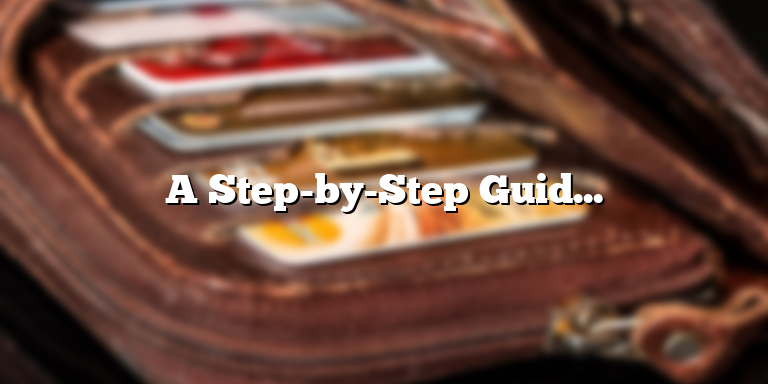
What You Need to Make Salted Butter
If you’re a fan of salted butter, you may have wondered how difficult it is to make it at home. The good news is that it doesn’t require any special equipment or complicated steps! All you need are a few simple ingredients and a willingness to get your hands dirty. Below is a detailed guide on what you need to make salted butter.
Heavy Cream: The first and most important ingredient in making salted butter is heavy cream. Ideally, you’ll want to use high-quality cream that has a fat content of around 35% or higher. Heavy cream is rich in butterfat, which is what makes it possible to turn it into butter. If you’re buying your cream from a local dairy, make sure that it’s pasteurized.
Stand Mixer: While it is possible to make butter by whisking the cream by hand, it’s a labor-intensive process that can take hours. Using a stand mixer with a whipping attachment is the easiest and most efficient way to transform the cream into butter. Most stand mixers have a speed control that allows you to adjust the mixing speed from slow to fast.
Cheesecloth: Cheesecloth is a finely-woven fabric that is often used in cooking and baking. In this case, it will be used to strain the liquid away from the butter solids. Look for cheesecloth at your local grocery store or online.
Sea Salt: Finally, you’ll need some sea salt to add flavor to your butter. You can use any type of sea salt, but coarse sea salt works best since it provides a nice texture and crunch. Don’t worry about the salt overpowering the butter – you can adjust the amount to your liking!
Now that you know what you need to make salted butter, it’s time to get started! With just a few ingredients and some elbow grease, you’ll have delicious, homemade butter in no time.
Preparing the Heavy Cream for Churning
If you’re a fan of butter, then you know that nothing beats the taste of homemade butter. Unlike store-bought ones, homemade butter has a rich, creamy texture and an unbeatable taste, which makes it an excellent choice for cooking or spreading on bread. One of the most popular types of butter is salted butter, and although it may seem daunting to make, it’s surprisingly easy. Here’s how to make salted butter from scratch:
The first step in making salted butter is preparing the heavy cream for churning. To do this, pour your heavy cream into your stand mixer and let it run until it reaches the stage of whipped cream for about 10-15 minutes before churning it into butter.
This process ensures that the cream is light, fluffy, and ready to churn into butter. It’s essential to note that if you over-whip the cream, it will eventually turn into butter without the need for churning. This is why it’s crucial to keep an eye on the mixer at all times to avoid over-whipping.
Additionally, some recipes suggest using room temperature cream, while others recommend using chilled cream. However, you can choose whichever method you prefer, as both options work well. The most important thing is to ensure that the cream is of high quality, as this will affect the overall taste of your butter.
Once the whipped cream is ready, it’s time to move on to the churning process. There are several ways to churn butter, including using a butter churn, a food processor, or even a mason jar. However, a stand mixer with a whisk attachment is the easiest and most efficient method.
In conclusion, making salted butter at home is a simple process that anyone can do. By following the steps outlined above, you can enjoy delicious, homemade, and perfectly salted butter right in the comfort of your own home. Plus, making your own butter is a fun and rewarding experience that’s sure to impress your friends and family.
Churning the Cream to Make Butter
Making salted butter at home is a simple process that does not require any special tools or equipment. All you need is fresh heavy cream, a mixer or blender, a large bowl, and a few pinches of salt. Making butter by hand is a great way to involve kids in the process of cooking, and it can also be a fun activity for your family to share.
The first step to making salted butter is to whip the heavy cream until it thickens and turns into whipped cream. You can use a handheld mixer or stand mixer, or even a blender, to whip the cream. The speed and time needed to whip the cream will depend on the type of mixer you are using and the fat content of the cream. Generally, it takes around 8 to 10 minutes of mixing at medium to high speed to achieve the desired thickness.
Once the whipped cream reaches the desired state, continue mixing the cream until the separation occurs, and the butterfat clearly separates from buttermilk. This process is called churning. You can do this by continuing to mix the cream at high speed for a few more minutes, or by gently stirring the mixture using a wooden spoon or spatula.
If you’re using a mixer, you will notice the mixture will change from a whipped cream texture to a lumpy texture, and you’ll hear a sloshing and splattering sound. This means the butterfat is beginning to separate from the cream. If you’re mixing by hand, you’ll notice the mixture start to thicken and become more difficult to turn. This means the butterfat is starting to form lumps.
Once you see that the butter and buttermilk have separated, stop mixing and gently remove the butter solids from the buttermilk using a slotted spoon or spatula. Place the butter solids in a separate container and rinse them with cold water to remove any remaining buttermilk. You can also knead the butter to remove any remaining liquid and to shape it into a block or roll.
To give your salted butter its distinctive flavor, sprinkle a few pinches of salt over the butter solids and knead the mixture again. You can use sea salt, kosher salt, or any other type of salt you prefer. The amount of salt needed will depend on the amount of butter you are making, but as a general rule, ¼ teaspoon of salt per half pound of butter is a good starting point. Taste the butter after adding salt to see if it has the desired flavor, and adjust the salt as needed.
Washing and Salting the Butter
If you’ve ever wondered what separates average butter from great butter, the key lies in how you process it. One simple way to enhance the taste and shelf life of butter is by washing and salting it. Here’s how it’s done:
The first step is to wash the butter in cold water. Put the butter in a large bowl and pour cold water over it. Gently knead the butter by hand to release any buttermilk that remains in it. Repeat this process if necessary, until the water runs clear. The water will turn cloudy at first, but after a few washes, it’ll begin to clear up.
Once you’ve successfully washed the butter, it’s time to remove any remaining liquid. Knead the butter by hand or with a wooden spoon until all the water is out. This step is important because any remaining liquid can cause the butter to spoil faster, so you want to get rid of as much as possible.
It’s time to add the salt to your butter. Most butter recipes call for sea salt, since it has a great flavor and grainy texture. Use your hands or a spoon to mix the salt into the butter until it’s evenly distributed. If you’re not sure how much salt to add, start with a small amount and taste the butter until it reaches your desired level.
The amount of salt you use depends on your personal preference, but a good rule of thumb is to use about a teaspoon of sea salt for every pound (or four sticks) of butter. Remember that salt also serves as a preservative, so the more salt you add, the longer your butter will last.
After you’ve mixed in the salt, you can either shape your butter into a block or roll it into a log using wax paper or plastic wrap. Make sure to chill the butter in the refrigerator for a few hours before using it or placing it in the freezer for long-term storage.
Now you know how easy it is to wash and salt your own butter at home. Not only does it taste better than store-bought butter, but it can also last longer and has fewer additives and preservatives. Give it a try next time you’re making homemade butter, and your taste buds will thank you.
Storing Your Homemade Salted Butter
One of the perks of making your own salted butter is that you have full control over the ingredients. Not only that, but you also have control over the amount of salt that goes into it, which can give your butter a unique and tailored flavor. But once you’ve made your butter, you’ll want to store it properly to keep it fresh for as long as possible.
The best way to store homemade salted butter is by wrapping it in wax paper, parchment paper, or plastic wrap. These materials help to protect the butter from air and moisture, which can cause it to spoil faster. You can also add an extra layer of protection by storing your wrapped butter in an airtight container, such as a Tupperware or glass jar with a tight-fitting lid.
When it comes to storing your homemade salted butter, it’s important to keep it in the refrigerator. This will help to keep it fresh and prevent any harmful bacteria from growing. Butter stored in the refrigerator can last for up to two weeks, depending on the quality and freshness of the cream used to make it.
If you find that you won’t be able to use all of your butter within two weeks, you can also freeze it. Wrap your butter tightly in plastic wrap or wax paper, then place it in a freezer-safe bag or container. Frozen butter can last for up to six months in the freezer, but it’s important to note that the texture and flavor may change slightly over time.
When you’re ready to use your frozen butter, simply take it out of the freezer and let it thaw in the refrigerator for a few hours, or at room temperature for a quicker thaw. It’s best to use frozen butter within six months of freezing for optimal flavor and quality.
Overall, storing homemade salted butter is fairly straightforward. Just be sure to wrap it tightly and keep it in the refrigerator or freezer, and you’ll be able to enjoy fresh, delicious butter whenever you need it.






